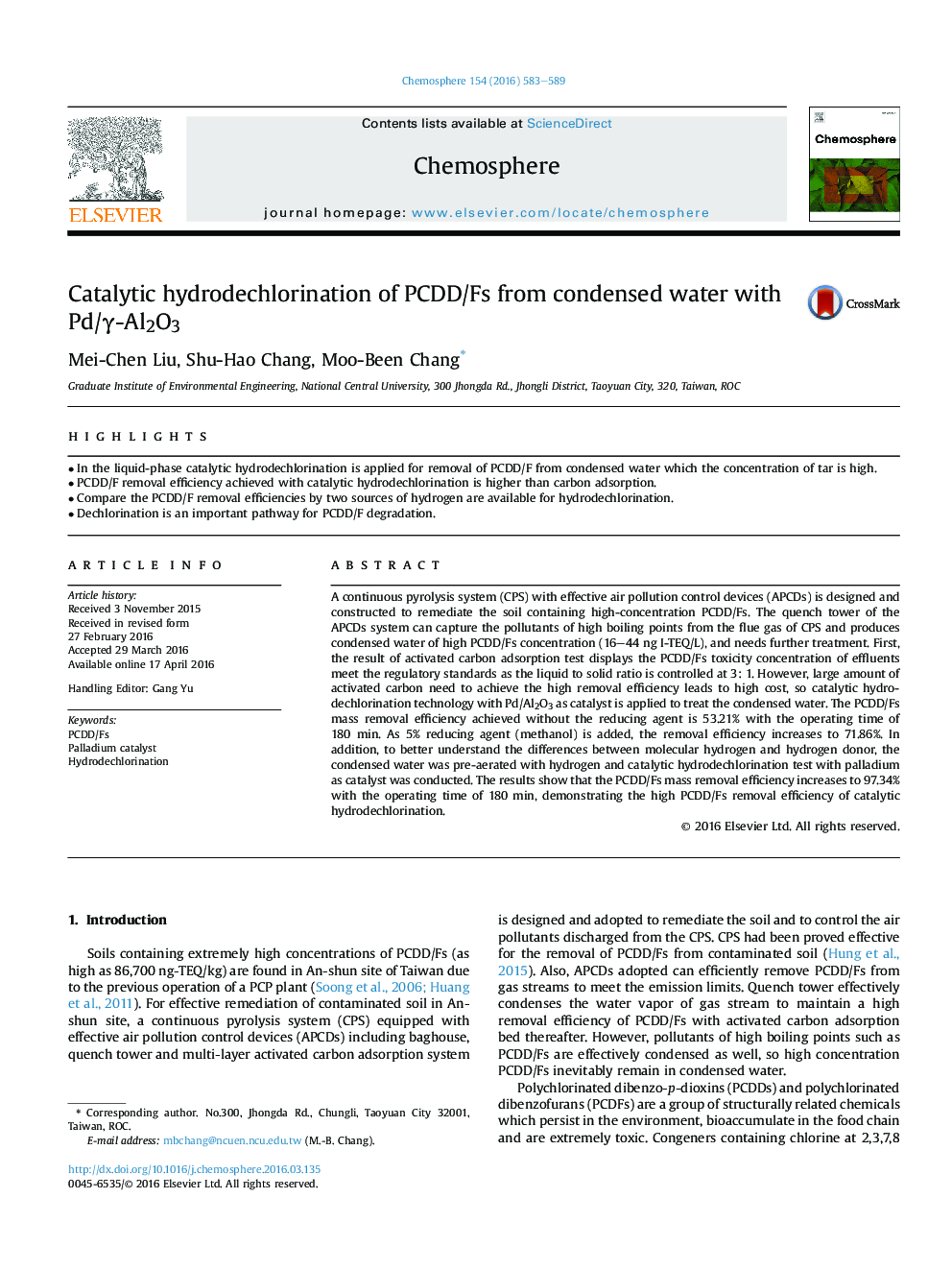| Article ID | Journal | Published Year | Pages | File Type |
|---|---|---|---|---|
| 6306656 | Chemosphere | 2016 | 7 Pages |
Abstract
A continuous pyrolysis system (CPS) with effective air pollution control devices (APCDs) is designed and constructed to remediate the soil containing high-concentration PCDD/Fs. The quench tower of the APCDs system can capture the pollutants of high boiling points from the flue gas of CPS and produces condensed water of high PCDD/Fs concentration (16-44Â ng I-TEQ/L), and needs further treatment. First, the result of activated carbon adsorption test displays the PCDD/Fs toxicity concentration of effluents meet the regulatory standards as the liquid to solid ratio is controlled at 3: 1. However, large amount of activated carbon need to achieve the high removal efficiency leads to high cost, so catalytic hydrodechlorination technology with Pd/Al2O3 as catalyst is applied to treat the condensed water. The PCDD/Fs mass removal efficiency achieved without the reducing agent is 53.21% with the operating time of 180Â min. As 5% reducing agent (methanol) is added, the removal efficiency increases to 71.86%. In addition, to better understand the differences between molecular hydrogen and hydrogen donor, the condensed water was pre-aerated with hydrogen and catalytic hydrodechlorination test with palladium as catalyst was conducted. The results show that the PCDD/Fs mass removal efficiency increases to 97.34% with the operating time of 180Â min, demonstrating the high PCDD/Fs removal efficiency of catalytic hydrodechlorination.
Related Topics
Life Sciences
Environmental Science
Environmental Chemistry
Authors
Mei-Chen Liu, Shu-Hao Chang, Moo-Been Chang,
